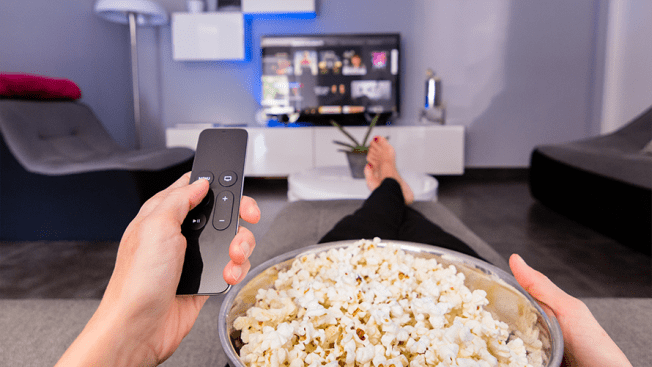Historically, brands have bought network television advertising for mass reach. The medium has long been known as the most effective way to drive large-scale brand awareness. When digital advertising entered the scene, it quickly emerged as the go-to strategy for building frequency among niche and highly targeted audiences, and for better or worse, the two mediums have stayed in their own lanes for years. When something’s not broke, don’t fix it, right?
Except, today the television industry looks very different than it did 10, or even five, years ago. To keep up with consumer demand, new and different channels have emerged for viewing TV content, and the traditional linear TV audience is shrinking as viewers shift to alternative screens and platforms. That’s not to say that Americans are spending less time watching television content, but they are spending less time watching it live on a traditional TV set via a pay cable subscription.
In the face of vastly different content consumption behaviors, many advertisers and agencies are still applying the same approach to TV that they have been for 25 years—use the medium to reach broad demographic audiences. But they’re missing out on the opportunity to buy TV in a new and different way that better reflects how viewers interact with content today, by using digital-like audience targets instead of demographics.
There are three common misconceptions hindering change in this area: Audience-based buying is expensive relative to demo-based buying, it’s not possible to reach audiences significantly better than they are already being reached with demo targets, and linear TV isn’t addressable so there’s no point in using digital-style audiences on TV.
It’s true that the traditional demographic buys negotiated annually during the upfronts come with lower CPMs because of the scale and history. And these large upfront deals are done at the corporate-level, guaranteed on a common demographic target across all (or most) brands in the portfolio. Switching to a behavioral target requires negotiating deals for each brand individually, losing some of the efficiency that accompanies large-quantity buying.
But it’s also true that primetime may not actually be the prime time for your brand. Focusing on maximizing your TV buy’s behavioral audience composition while not restricting daypart or program selection is likely to result in a more efficient buy and could result in increased brand sales. The TV networks today recognize the value of maintaining your ongoing relationship and can demonstrate how your behavioral target CPMs translate to your historic demo CPMs so that audience-based buying is only as expensive as the outcome of your negotiation.
Perhaps the bigger misconception comes from the belief that it’s not possible to reach a TV audience better than they are already being reached with a demo target, or at least not enough to move the needle. Behavior-based buying on linear TV is done by translating digital-style audiences into audience composition indices, indicating which programs, dayparts or networks have a higher concentration of your desired behavioral audience. This is still just buying your ads in programs or daypart rotations from a network.
But looking at the bigger picture, by network and daypart rotation, there’s room for significant optimization. A brand buyer target may have an audience composition index of 95 on an expensive primetime show and a 150 index on a less expensive early morning show, making the early morning program a much better buy for your brand. Finding optimal shows based on a concentration of your brand buyers’ targets can result in a vastly different buy.
Even though linear TV is not an addressable medium, TV networks are no longer offering only linear TV. Today’s networks are delivering their content in new and different ways, via VOD and OTT platforms such as Hulu and Roku. As a marketer, it is the content offered by a TV network that you are buying, delivered on a variety of platforms. These platforms are addressable, support dynamic insertion or both. That means that taking the time and effort to define and provide a digital-style audience target for buying your TV advertising is not just rolled up into audience composition indices for the linear TV portion of your buy—it is also used to deliver the addressable portion of your TV buy to your brands’ specific behavioral audiences.
As we’ve seen with all of the various advanced TV platforms being built and tested by the TV networks, the industry recognizes the need for a new way of reaching a TV audience. Today, TV is so much more than just a mass-reach medium. In contrast to buying shows that appeal to a certain demographic and producing creative that speaks to that audience (young viewers, for example), audience-based buying enables advertisers to reach audiences that will actually respond to an ad with a purchase and not only be engaged because the content is enticing.
Looking at the big picture of TV content on all of the different devices and platforms, advertisers have the opportunity to do a very good job of more precisely reaching an audience that is more likely to purchase their product with engaging advertising content. It is a new era of television.








